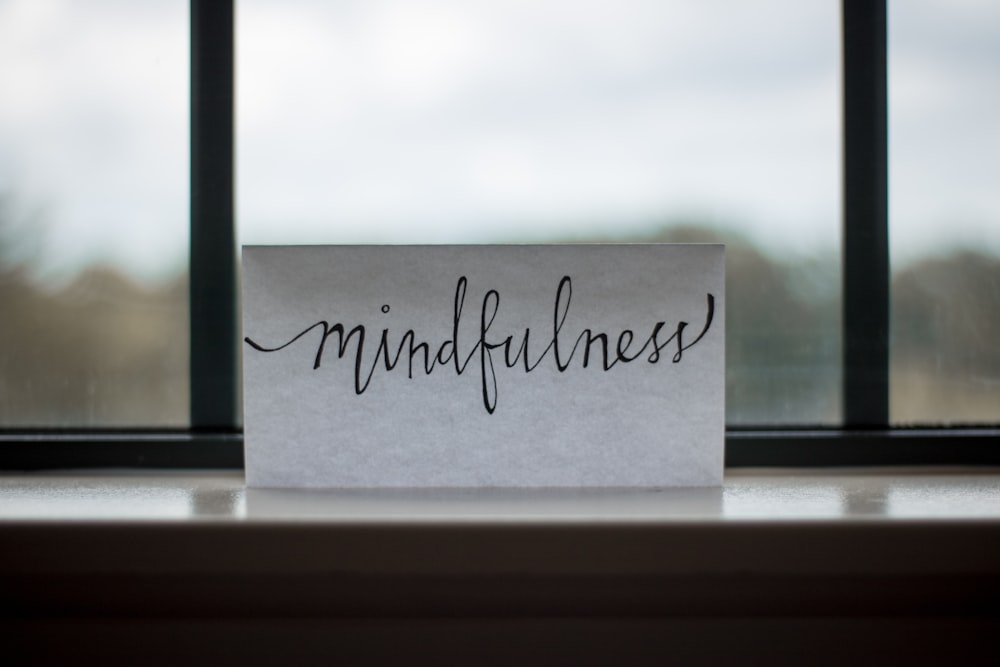Cover photo by Ave Calvar on Unsplash
Written by Dray Salcido
“Our selfishness will condemn us to the worst suffering that we ourselves have invented – loneliness.” – Paulo Coelho
This time of year evokes a more selfless spirit for many of us. Something about the Thanksgiving and Christmas seasons make us feel appreciative, or make us think that’s what we should be feeling. This got me curious to compare and understand trends in selfishness over time. There are studies suggesting baby boomers are the most selfish, and others blaming the millennials for our entitled world (Martin & Roberts, 2021). Social theorists may argue selfish behavior is entirely dependent on human rights availability (Nye, 2013). There are myriad explanations.
Regardless, the literature is discrepant. You could argue and find evidence that each decade contains the most heartless people. The truth is selfishness is a human experience irrelevant of time or circumstance. It’s always existed and likely always will. Rather than focus on who or what’s to blame, why not increase our efforts toward altruistic solutions? Perhaps a practice of gratitude? Gratitude is one of our most effective tools to mitigate suffering (Brown, 2011). How is this achieved? The following describes three methods that will increase our gratitude. I suggest we remember them not only the last two months of the year but every day.

Be Aware
According to Buddhist philosophy, suffering is the result of selfishness (Salcido, 2020). Christianity would say to seek not our own, but the welfare of others (King James Bible). And even those without a religious or spiritual lens feel frustrated from the selfish behaviors of others. Not only that, but we make ourselves lonely when we focus only on ourselves. Think about it, if you’re the only one on your mind, do you have room to consider others? If you only live for yourself, how can you cultivate relationships?
The fact is, the self is illusive. Why obsess over something as complex and ever changing as our ideas of who we are? I’m not suggesting that we think less of ourselves, but that we think about ourselves less. How can we do this? Be aware. I don’t mean increasing our awareness of who we think we are. Often this just feeds the ego. I mean increasing awareness of our experience. This requires noticing and being curious of the present, without judging it. Let me illustrate the difference.

Be Accepting
Imagine someone stole from you. Your thoughts could be, “I would never do something like that” or “Of course this happened to me, I must have a target on my back.” Whether self deprecating or self inflating, thoughts like these exacerbate our predetermined ideas of the self and bring with them feelings of anger and shame. We are essentially asking ourselves, “What does this experience mean about me?” This questioning comes from a mind that still believes we matter most, we should be invincible, and we should not have to suffer but only feel good. Because this way of thinking is not realistic, another option is to think differently. You may say to yourself, “This is disappointing” or “I wonder if those that stole were desperate?” You’re likely to feel sadness but emotionally recover quicker. Consequently, you may feel peace for letting go. This focus is more in the here and now. It accepts reality and keeps our focus on what is rather than what or who is to blame. To practice acceptance, I suggest learning more about mindfulness (Eberth & Sedlmeier, 2012) and daily meditation. And when we are not cross legged on the floor, how can we take our intentions away from the egoic self and toward compassion for others and our experience?

Be unAssuming
Much of our selfishness and suffering is not in what we do and say, but in our thinking. The thoughts we choose to focus on have a great impact on our reality. Are many of your thoughts filled with criticism and comparison? These are often created when we attempt to control others or our experience. Managing our minds requires intentional work against cognitive distortions like mind reading. Mind reading is jumping to conclusions. It occurs when you believe you know what another person is thinking. You define what other people’s reasons are for doing what they do. This is done purely out of assumptions and generally with no physical evidence. We fail to acknowledge other possibilities because our thoughts make sense to us, therefore they must be “true” or “valid.”

We often read minds when we’re afraid and would like to change the outcome (Strohmeier, 2016). Our motive is to change the circumstance merely because we feel uncomfortable. It is selfish to not let others think, do, and be as they’d like. Assuming is self-inflicted anxiety. Now, don’t tell yourself you’re bad for falling into this habit: we all do this! Remember to be aware and accept the moment it for what it is.
Now, how do we repair our distorted thinking? Essentially being unassuming requires humility: a firm acknowledgement that we don’t know everything, nor can we. We burn up a lot of energy believing we need answers in order to feel okay. What if the reverse was true? Perhaps we need to choose to be okay in order to find answers. So, how do we increase our knowing? Try the following:
-
Ask yourself the following questions: “Are there times when this isn’t true?” “What is another way of looking at this?” “Is this thought helpful?” “Would I rather be right, or happy?”
-
Try an ABC sheet or Automatic Thought Record to practice noticing and changing your usual way of thinking.
-
Use statements of gratitude as a way to try on new thoughts. For example, I might think, “I’m a bad person” and replace it with, “I’m grateful for when I mess up. It’s great feedback for becoming the person I really want to be!”

The brain is plastic. And because of this, our behavior is too. We are capable of thinking less about ourselves and more of others when we increase awareness, accept reality, and stop assuming. Let’s practice gratitude for our capacity to think more of others and less about ourselves.
This Week:
1. Be aware. Ask yourself “What am I telling myself?” “What am I choosing to make that mean about me?” “What emotion has arrived as a result of my thinking?” “Where do I feel that in my body?”
2. Be accepting. Speak compassion to yourself for the awareness you’ve gained. Give that same compassion to those around you, and practice giving others the benefit of the doubt.
3. Be unassuming. Remind yourself “I don’t know what other people are thinking.” Bring your thoughts to the evidence in front of you rather than what you think might be happening.
4. And most importantly: Be grateful! Be grateful for change. Be grateful for the past, present and future. Be grateful for what pain makes possible! And be grateful for the richness of your life. Intentionally choose to see it.
References
Brown, B., Hernandez, V. R., & Villarreal, Y. (2011). Connections: A 12-session psychoeducational shame resilience curriculum.
Eberth, J., & Sedlmeier, P. (2012). The effects of mindfulness meditation: A meta-analysis. Mindfulness, 3(3), 174-189.
King James Bible. (2008). Oxford University Press. (Original work published 1769)
Martin, G., & Roberts, S. (2021). Exploring legacies of the baby boomers in the twenty-first century. The Sociological Review, 00380261211006326.
Nye, A. (2013). Feminist theory and the philosophies of man. Routledge.
Salcido, A. (2020). The Paradox of Attachment. Healthy Humans Project. https://www.healthyhumansproject.com/the-paradox-of-attachment/
Strohmeier, C. W., Rosenfield, B., DiTomasso, R. A., & Ramsay, J. R. (2016). Assessment of the relationship between self-reported cognitive distortions and adult ADHD, anxiety, depression, and hopelessness. Psychiatry research, 238, 153-158.



 Dray Salcido
Dray Salcido














 Chelom Leavitt received her Ph.D. from Penn State. She studies healthy sexuality in committed relationships and focuses on how mindfulness during sex may be associated with positive outcomes for both men and women. Dr. Leavitt’s recent publications include cross-cultural work on sexual mindfulness, women’s sexual response cycles, and a study examining the role of orgasm in sexual and relational satisfaction for men and women.
Chelom Leavitt received her Ph.D. from Penn State. She studies healthy sexuality in committed relationships and focuses on how mindfulness during sex may be associated with positive outcomes for both men and women. Dr. Leavitt’s recent publications include cross-cultural work on sexual mindfulness, women’s sexual response cycles, and a study examining the role of orgasm in sexual and relational satisfaction for men and women.![IMG_2700_Original[1]](https://i0.wp.com/www.healthyhumansproject.com/wp-content/uploads/2020/06/IMG_2700_Original1.png?resize=152%2C152&ssl=1) Ellyse Winward is currently studying Elementary Education at BYU with a Family Life minor. In July 2019, she was introduced to the book Sexual Wholeness in Marriage by Drs. Busby, Carroll, and Leavitt which subsequently changed her life. Ellyse has developed a passion for learning and talking about healthy sexuality and mindfulness. She has loved learning from and working with Dr. Chelom Leavitt. Ellyse firmly believes mindfulness has the ability to better connect us with ourselves and the people around us and can really be a small thing that makes all the difference!
Ellyse Winward is currently studying Elementary Education at BYU with a Family Life minor. In July 2019, she was introduced to the book Sexual Wholeness in Marriage by Drs. Busby, Carroll, and Leavitt which subsequently changed her life. Ellyse has developed a passion for learning and talking about healthy sexuality and mindfulness. She has loved learning from and working with Dr. Chelom Leavitt. Ellyse firmly believes mindfulness has the ability to better connect us with ourselves and the people around us and can really be a small thing that makes all the difference!




 Rachael Porter is from Saratoga Springs, Utah. Rachael is currently a Family Life major with a minor in gerontology at BYU. She is the oldest of four kids and is married to her best friend Matt. She works as a TA for online family life classes at BYU. Rachael looks forward to graduating in December 2020 and having children afterward. She enjoys ice cream, traveling, friends, hiking, camping, plants, and movie nights.
Rachael Porter is from Saratoga Springs, Utah. Rachael is currently a Family Life major with a minor in gerontology at BYU. She is the oldest of four kids and is married to her best friend Matt. She works as a TA for online family life classes at BYU. Rachael looks forward to graduating in December 2020 and having children afterward. She enjoys ice cream, traveling, friends, hiking, camping, plants, and movie nights.




